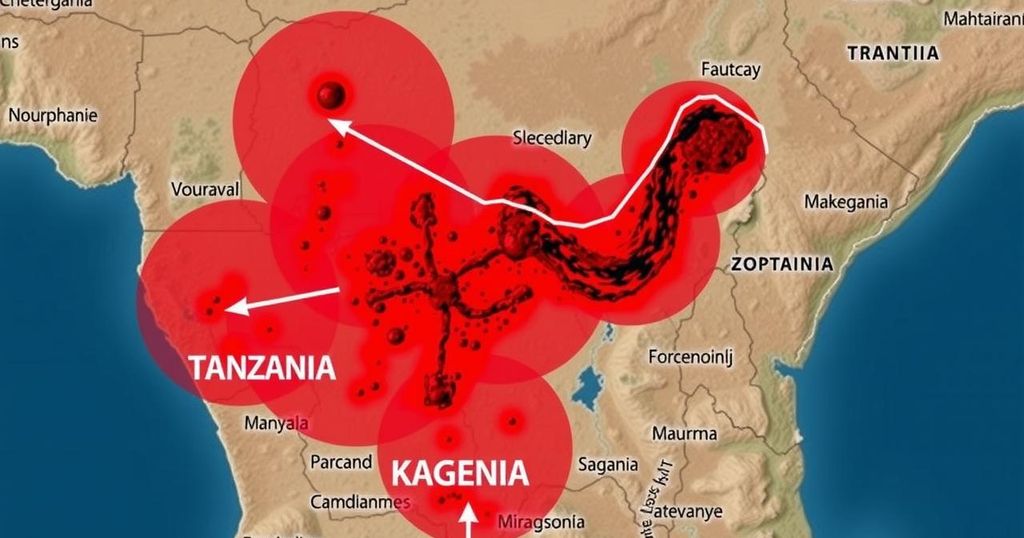The WHO has warned of a suspected Marburg virus outbreak in Tanzania’s Kagera region, with eight reported deaths and nine suspected cases. Surveillance efforts are increasing, and response teams have been deployed. Given the high transmissibility of the virus, the situation is being treated with urgency, although the global risk remains low at this time.
The World Health Organization (WHO) has raised an alarm regarding a suspected outbreak of the Marburg virus in Tanzania’s Kagera region, following reports of at least eight fatalities linked to the disease. Nine suspected cases have emerged over a span of five days, prompting heightened surveillance efforts. WHO Director-General Dr. Tedros Adhanom Ghebreyesus indicated that an increase in reported cases is likely as monitoring procedures become more efficient. Marburg virus, which shares similarities with Ebola, can lead to severe symptoms including acute hemorrhagic fever, and thus poses serious health risks.
While the Tanzanian authorities have yet to officially confirm the outbreak, the WHO is monitoring suspected cases, including among healthcare workers, and has mobilized rapid response teams in the area. Given Kagera’s status as a significant transit hub, the WHO has designated the risk of viral spread within the region as “high”. Dr. Tedros advised that, at this time, no trade or travel restrictions are warranted.
Tanzania previously experienced its inaugural Marburg outbreak in March 2023, during which six individuals succumbed to the virus. The Marburg virus is known to be transmitted from fruit bats to humans, and contact with infected bodily fluids facilitates its spread. Presently, there are no established vaccines or specific treatments available, though research trials are underway.
The global risk regarding this current outbreak remains classified as “low,” with no immediate concerns over international transmission noted. The WHO continues to monitor the situation closely as it develops and stresses the importance of preparedness in addressing emerging health threats.
The Marburg virus, an acute and highly infectious pathogen, was first identified in the 1960s and is notorious for its high fatality rate, averaging around 50 percent among those infected. Initial transmissions occur from fruit bats to humans, with subsequent spread through bodily fluids of infected individuals. Health authorities globally are particularly vigilant due to the potential for outbreaks in regions with limited healthcare infrastructure. Tanzania’s past experience with Marburg in 2023 necessitates prompt action to prevent resurgence and manage public health responses effectively.
In conclusion, the World Health Organization is closely monitoring a suspected Marburg virus outbreak in Tanzania’s Kagera region, where eight deaths have been reported. While surveillance efforts are increasing, the response mechanisms are in place to manage this significant health threat. The potential for the virus to spread remains concerning due to Kagera’s connectivity with neighboring countries, yet the WHO assesses the global risk as low at this stage.
Original Source: www.bbc.com






